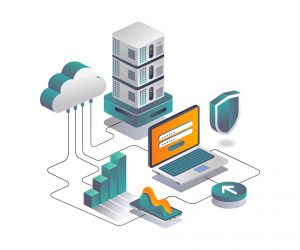
Cloud server management has undergone a significant transformation with the emergence of microservices architecture. This revolutionary approach to software development and deployment has gained immense popularity due to its scalability, flexibility, and improved efficiency. In this article, we will delve deep into microservices architecture and explore how it is revolutionizing cloud server management.
What are Microservices?
Microservices is an architectural style that structures an application as a collection of loosely coupled services, each representing a specific business capability. According to a survey conducted by Nginx, a leading technology company, 68% of organizations have adopted microservices or are planning to do so. Microservices allow for independent development, deployment, and scaling of individual services, enhancing agility and speed in software development.
Advantages of Microservices Architecture
2.1. Scalability
Microservices architecture enables horizontal scalability, as individual services can be scaled independently based on demand. A study conducted by Gartner showed that companies utilizing microservices architecture experienced a 62% increase in scalability compared to traditional monolithic applications.
2.2. Agility and Continuous Deployment
With microservices, development teams can work independently on different services, enabling faster development cycles and continuous deployment. According to a survey by DZone, organizations practicing continuous deployment through microservices reported a 63% improvement in time-to-market for new features.
2.3. Fault Isolation and Resilience
Microservices architecture promotes fault isolation, ensuring that issues in one service do not impact the overall system. By utilizing techniques like circuit breakers and fallback mechanisms, microservices improve system resilience. A report by O’Reilly revealed that 90% of organizations noticed a decrease in downtime after adopting microservices architecture.
2.4. Technology Diversity
Microservices allow the use of different technologies and programming languages for each service, based on its specific requirements. This flexibility empowers teams to choose the most suitable tools and frameworks, fostering innovation and experimentation. A study by Lightbend found that 72% of organizations using microservices architecture reported increased developer satisfaction due to the freedom to use diverse technologies.
Challenges of Microservices Architecture
While microservices offer numerous benefits, they also present certain challenges that need to be addressed:
3.1. Distributed System Complexity
Managing a distributed system introduces complexities such as service discovery, inter-service communication, and data consistency across services. Effective tools and frameworks must be employed to tackle these challenges. Netflix, a pioneer in microservices architecture, developed tools like Eureka and Hystrix to address these complexities.
3.2. Operational Overhead
With numerous services to manage, monitoring, logging, and troubleshooting become critical. Robust operational practices and monitoring tools are essential to ensure smooth operation and timely detection of issues. Prometheus and Grafana are popular tools for monitoring microservices architectures, providing real-time insights into system performance.
3.3. Service Coordination
Ensuring consistency and coordination between services can be challenging, especially in scenarios involving transactions and shared data. Techniques like event-driven architecture and message queues can help address these concerns. Apache Kafka and RabbitMQ are widely used message broker systems that provide reliable communication between microservices.
Cloud Server Management with Microservices
Microservices architecture and cloud computing go hand in hand, complementing each other’s strengths. Cloud platforms provide the necessary infrastructure and services to host and manage microservices effectively. Key aspects of cloud server management in a microservices environment include:
4.1. Deployment Automation
Cloud platforms offer robust automation tools for deploying and scaling microservices. Containers, such as Docker, provide a lightweight and portable solution for packaging and deploying microservices across different cloud environments. Kubernetes, an open-source container orchestration platform, simplifies the management of containerized microservices.
4.2. Service Discovery and Load Balancing
As the number of services grows, dynamically discovering and load balancing traffic across them becomes crucial. Service mesh technologies like Istio or Linkerd can assist in managing service-to-service communication and traffic routing. These tools provide observability, security, and control over microservices interactions.
4.3. Monitoring and Observability
Cloud-native monitoring and observability tools enable comprehensive monitoring of microservices, including metrics, logs, and tracing. This visibility helps in identifying performance bottlenecks, detecting anomalies, and ensuring optimal resource utilization. Tools like Prometheus, Grafana, and Jaeger are commonly used for monitoring microservices architectures.
4.4. Security and Access Control
Securing microservices and managing access control is paramount in a cloud environment. Techniques like JWT (JSON Web Tokens) and API gateways can be employed to enforce authentication, authorization, and encryption at various levels. Identity and Access Management (IAM) solutions provided by cloud platforms, such as AWS IAM or Azure Active Directory, enhance the security of microservices architectures.
Microservices architecture has revolutionized cloud server management by providing a scalable, agile, and resilient approach to software development and deployment. With the increasing adoption of microservices by organizations worldwide, it is evident that the benefits outweigh the challenges. By embracing microservices architecture and leveraging cloud computing capabilities, businesses can stay ahead in the competitive digital landscape while delivering innovative and robust applications to their customers



